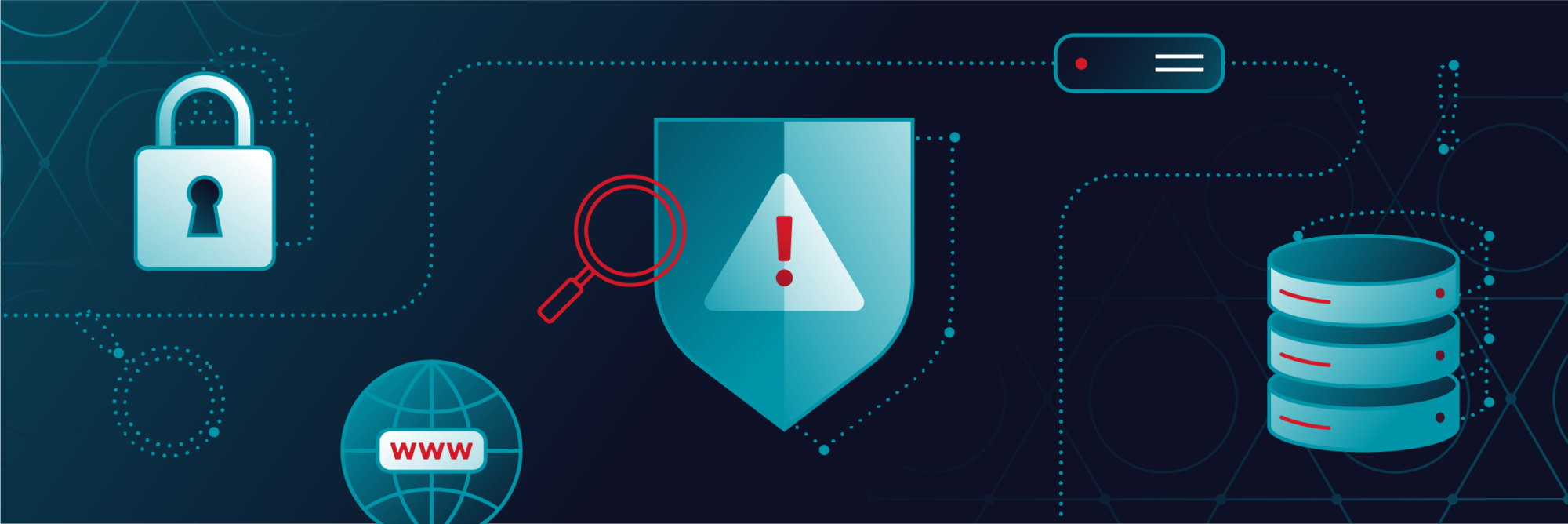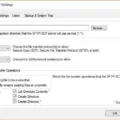Security Information and Event Management (SIEM) is a vital component of any security strategy. It collects, analyzes, and correlates data from multiple sources to provide a holistic view of an organization’s cybersecurity posture. However, with the ever-increasing complexity of IT environments, many organizations have difficulty maintaining their SIEM solutions on-premise. That’s why many are turning to Security Information and Event Management as a Service (SIEMaaS).
SIEMaaS eliminates the need for organizations to deploy, manage, and maintain an in-house SIEM solution. Instead, they can outsource their SIEM needs to a third-party provider who will handle all aspects of the implementation and ongoing management. This allows organizations to focus their resources on other areas without compromising their security posture.
A good SIEMaaS offering will include log collection from multiple sources such as endpoints, firewalls, databases, applications, etc., real-time monitoring for threats and anomalies across the network, alerting capabilities when a threat is detected, incident response services to help contain and eradicate threats quickly and effectively, and comprehensive reporting features that allow organizations to gain insights into their security posture.
One of the main benefits of SIEMaaS is scalability. As an organization’s security needs increase or decrease over time, it can easily scale up or down its service package to accommodate these changes without having to invest in new hardware or software licenses. This allows them to save money while still maintaining adequate coverage against threats.
Another key benefit of SIEMaaS is that it provides access to certified security analysts who can monitor networks 24/7 for threats and respond quickly in case of an incident. This greatly reduces the amount of time needed for a manual investigation into potential threats by providing quick access to knowledgeable personnel who can help contain any threat before it does too much damage.
Overall, SIEMaaS is an effective way for organizations to leverage advanced security analytics without having to invest heavily in hardware or personnel costs. By outsourcing their SIEM needs to a trusted vendor they can save money while still ensuring that their networks remain secure against any potential threats.

Is SIEM a Software-as-a-Service (SaaS) Solution?
Yes, SIEM is a Software-as-a-Service (SaaS) solution. SaaS-based SIEM solutions are managed cloud-based solutions that provide real-time monitoring and analysis of security events, as well as data logging to ensure compliance with regulations, auditing, and tracking purposes. Such solutions can be used to identify and respond to malicious activities in real time, detect suspicious behavior, and investigate security incidents quickly. Additionally, they can help organizations with their overall cybersecurity posture by providing visibility into their network’s activity.
Differences Between SIEM and SOC
The difference between a Security Information and Event Management (SIEM) system and a Security Operations Center (SOC) is that the SIEM automates the collection, analysis, and alerting of security-related events from multiple sources, while the SOC is an organization or team of specialist personnel responsible for monitoring and responding to security-related incidents.
A SIEM system aggregates log data from all systems in your environment, including both IT and OT, as well as third-party applications. It correlates this data to detect threats, provide alerts when malicious activity is detected and provides visibility into the health of your environment.
Meanwhile, a SOC provides a centralized point of contact for security professionals to investigate potential threats. Using threat intelligence from external sources, such as vendors or government agencies, they can identify incidents quickly and take action to contain any damage. The SOC also provides guidance on context-specific threat mitigation strategies.
In summary, the SIEM is an automated tool used to detect threats while the SOC is a team of experts who use their knowledge and experience to assess risks and mitigate threats before they become too serious. Both are essential components of an effective cybersecurity strategy.
Comparing MDR and SIEM
The main difference between MDR and SIEM is the type of service they provide. MDR (Managed Detection and Response) is a comprehensive security solution that provides 24/7 monitoring and response services from experienced security analysts. These professionals work to identify and respond to threats as soon as they are detected in order to minimize any damage caused or data compromised. On the other hand, SIEM (Security Information and Event Management) is a platform that provides visibility into your environment by collecting, analyzing, and correlating log data from multiple sources. It helps you detect threats in real time before they can cause any harm, allowing you to take immediate action. While both solutions offer valuable protection against cyber threats, MDR provides the added benefit of having knowledgeable professionals actively working to prevent attacks before they occur.
Examples of SIEMs
A Security Information and Event Management (SIEM) system is a powerful tool used to monitor and analyze network activity. It is designed to help security teams detect, respond to, and deter cyber threats.
An example of a SIEM is ArcSight ESM (Enterprise Security Management). This product combines security event management with threat intelligence, data correlation, and analytics capabilities. It allows users to collect data from multiple sources such as firewalls, intrusion prevention systems, servers, and other endpoints in order to detect suspicious activity. Additionally, it can be used for compliance reporting, incident response planning/execution, vulnerability assessment/management, forensics analysis, and more.
Other popular SIEM products include AT&T Cybersecurity (formerly known as AlienVault), Fortinet, IBM QRadar, McAfee SIEM, and Splunk. Each of these offers different features such as log collection/analysis, threat detection/response capabilities, and more.
Is Microsoft Azure a Security Information and Event Management System?
Yes, Microsoft Azure is a SIEM. Azure Sentinel is a cloud-native security information and event management (SIEM) solution that collects data from cloud services and on-premises sources. It then uses advanced analytics and machine learning to detect threats within the data, allowing organizations to quickly respond to potential attacks. Azure Sentinel also provides proactive security intelligence, helping organizations predict emerging threats and stay ahead of cybercriminals. With its scalability and real-time threat detection capabilities, Azure Sentinel can easily handle billions of cybersecurity events per day.
Comparing SIEM and Splunk
SIEM stands for Security Information and Event Management, while Splunk is a software platform mainly used for log management.
SIEM is a technology that provides organizations with real-time security information and event management capabilities. It gives organizations a unified view of all their security events, allowing them to detect threats quickly and accurately. It can also be used to monitor compliance policies and enforce security best practices.
Splunk on the other hand is more focused on log management and data visualization. It’s designed to store and index real-time data from multiple sources in the form of events. The platform enables users to search, analyze, visualize, and report on machine data in order to gain operational intelligence from the insights it provides. Additionally, it can be used to develop custom applications for analytics, monitoring, reporting, and alerting purposes.
SIEM is a technology focused on providing real-time security information while Splunk is a software platform used mainly for log management and data visualization. While they both serve similar purposes in terms of obtaining insights from data, they differ significantly in terms of their capabilities as well as their approach to achieving these objectives.
The Three Main Roles of a SIEM
The three main roles of a Security Information and Event Management (SIEM) system are to provide improved network visibility, enable automation to improve cyber security, and aid compliance and forensic investigations through reporting.
The first role of a SIEM is to provide improved network visibility. This allows organizations to gain real-time insights into their IT environment, detect anomalies and respond quickly to potential threats. With an improved level of visibility, organizations can better identify the malicious activity as well as other issues such as misconfigured systems or unauthorized access attempts.
The second role of a SIEM is automation. Automation can help streamline the process of security monitoring and alerting by automatically correlating data from multiple sources in order to detect suspicious activities or patterns. Automation can also reduce the workload on IT security teams by taking over mundane tasks such as log analysis and incident response.
The third role of a SIEM is reporting. A SIEM provides organizations with detailed reports on user activity, system status, and events in order to support compliance requirements, aid forensic investigations, and prove adherence to organizational policies. These reports can help organizations stay compliant with regulatory requirements while also providing valuable insights into their IT environment that can be used for proactive threat prevention measures.
Can SIEM Replace Endpoint Detection and Response (EDR)?
No, SIEM does not replace EDR. While SIEM and EDR are different solutions and serve different purposes, they are complementary to each other and work well together, especially in a managed solution. EDR is designed to detect and respond to threats on a single endpoint. It can detect malicious behavior and suspicious processes, as well as terminate malicious processes or isolate the infected system. On the other hand, SIEM is a Security Information and Event Management system that collects log data from multiple sources across an organization’s network. It aggregates this data into a central platform for analysis, correlation, alerting, incident response, and reporting.
By combining the strengths of both solutions into one comprehensive security solution, organizations can benefit from better detection and response capabilities for threats across their environment.
The Most Popular SIEM Solutions
The most popular Security Information and Event Management (SIEM) tools on the market are ManageEngine EventLog Analyzer, ManageEngine Log360, Exabeam Fusion, Elastic Security, Fortinet FortiSIEM, and Splunk Enterprise Security. All these tools offer a free trial or have free versions available for use.
ManageEngine EventLog Analyzer is an agentless SIEM solution that provides real-time monitoring and automated compliance reporting. It offers a wide range of features such as log collection from over 500 sources, automated alerting and response, user activity monitoring, and more.
ManageEngine Log360 is another SIEM solution that provides real-time analytics and reporting on network security events. It also offers a wide range of features such as log collection from over 500 sources, threat detection using AI/ML algorithms, anomaly detection, user activity monitoring, and more.
Exabeam Fusion is an advanced analytics platform that helps to detect and investigate advanced threats quickly. It offers features such as the intelligent correlation of events across multiple data sources and hosts, user behavior analytics for detecting malicious activity in the network, threat intelligence integration for proactive protection against emerging threats, etc.
Elastic Security is an all-in-one security platform that provides users with visibility into their infrastructure by collecting logs from multiple sources in real time. It also offers features such as anomaly detection to detect malicious behavior in the network; threat intelligence integration to provide context about threats; user entity tracking to monitor user activities; asset inventorying etc.
Fortinet FortiSIEM is an enterprise-grade SIEM designed to provide visibility into events across heterogeneous networks in real-time. It offers a wide range of features such as log collection from any source, automated incident response capabilities including policy enforcement actions; predictive analytics using AI/ML algorithms; asset inventorying, etc.
Splunk Enterprise Security is a comprehensive enterprise security solution designed to help organizations detect potential threats quickly by analyzing data generated by various sources including applications, servers, networks, etc., in real-time. It also provides advanced analytics capabilities such as machine learning for identifying suspicious activity in the network and integrated threat intelligence for timely protection against emerging threats etc.
Types of SIEM
The different types of Security Information and Event Management (SIEM) solutions are:
1. In-House SIEM: An in-house SIEM solution is a self-hosted system that allows organizations to collect, aggregate, and analyze security events from internal sources. This type of SIEM solution offers the highest levels of control, flexibility, and customization over data analysis and reporting capabilities.
2. Cloud-Based SIEM: Cloud-based SIEM solutions offer organizations the ability to quickly deploy and scale their security systems without investing heavily in hardware or software infrastructure. This type of SIEM solution provides access to real-time insights into the organization’s security posture, as well as automated alerts for suspicious activities and threats.
3. Managed SIEM: Managed SIEM solutions offer organizations a way to outsource their security event monitoring needs to an external provider. A managed SIEM provider typically offers a combination of both cloud-based and on-premise services that provide organizations with an end-to-end managed security monitoring solution.
Conclusion
In conclusion, SaaS-based Security Information and Event Management (SIEM) is an invaluable resource for organizations looking to protect their networks and data from the threat of cybercrime. With features such as real-time monitoring, security events analysis, and security data logging, SIEM provides a comprehensive solution for detecting, containing, and eradicating threats. Additionally, by employing cloud-based managed solutions such as ArcSight ESM, AT&T Cybersecurity (formerly known as AlienVault), Fortinet, IBM QRadar, McAfee SIEM, or Splunk, organizations can have access to 24/7 monitoring and response services from experienced security analysts. Overall, SIEM as a Service is an essential tool for any organization looking to stay ahead of the curve when it comes to cybersecurity.








